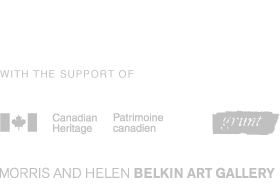Aboriginal Art in the Sixties: Fine and Popular
-
51
details
-
75
details
-
107
details
-
106
details
-
105
details
-
104
details
-
98
details
-
97
details
-
96
details
-
74
details
-
163
details
-
71
details
-
69
details
-
65
details
-
820
details
-
816
details
-
814
details
-
813
details
-
108
details
-
240
details
-
809
details
-
54
details
-
59
details
-
10
details
-
180
details
-
168
details
-
167
details
-
824
details
-
823
details
-
817
details
-
181
details
-
815
details
-
241
details
-
811
details
-
787
details
-
786
details
-
784
details
-
242
details
-
810
details
-
244
details
-
52
details
-
158
details
-
171
details
-
166
details
-
165
details
-
162
details
-
161
details
-
160
details
-
159
details
-
157
details
-
176
details
-
156
details
-
103
details
-
102
details
-
101
details
-
93
details
-
60
details
-
55
details
-
174
details
-
177
details
-
172
details
-
243
details
-
170
details
-
169
details
-
164
details
-
73
details
-
828
details
-
819
details
-
818
details
-
234
details
-
178
details
-
233
details
-
232
details
-
231
details
-
230
details
-
183
details
-
182
details
-
821
details
-
179
details
-
89
details
Migration, Mobility and the City
Vancouver developed in the heart of Musqueam traditional territory, which encompasses the entire lower mainland. In its midst, the city had local First Nations who, in the late 19th century, began to live on allocated Indian reserves. Other aboriginal groups and individuals whose history of seasonal mobility can be traced to traditional trade economies, and later to wage labour industries such as fishing, logging and long-shoring also came to the city. These people were part of a “return migration”; moving back and forth between reserves and work places.
This was a pattern familiar to artists such as Mungo Martin and George Clutesi who had been labourers. It is important to see their respective moves to the city to develop an economically viable art practice in the context of men who worked these ‘jobs’ to support their families. In this sense, Ellen Neel and Henry Speck were also part of this mobile art practice that included a larger history of a labour-based return migration. In contrast, in the 1940s, younger people such as Francis Baptiste and Judith Morgan were part of a ‘Indian art’ practice that included regional, national and international institutions; their subsequent moves to attend post-secondary art schools in the United States were linked to significant individuals in museums and residential schools that supported contemporary “Indian art.”
This need for institutional connections and support was also true for other young people in the late 50s and 60s such as Doug Cranmer who came to carve at the Museum of Anthropology with Bill Reid, and for a young Robert Davidson who came to attend high school. They (and others) were part of long standing return mobility between village and city, unlike Neel who moved permanently to Vancouver. She and other aboriginal artists, and the young couples who later came to take advantage of off-reserve housing in the late sixties, would depend on new kinds of social networks, assistance, and information to survive. Some brilliant young artists like Pat McGuire, who came from Haida-Gwaii got lost in the city. These artists paid the dues for those who came later and took on the mantle of professional artists making “high art.”
